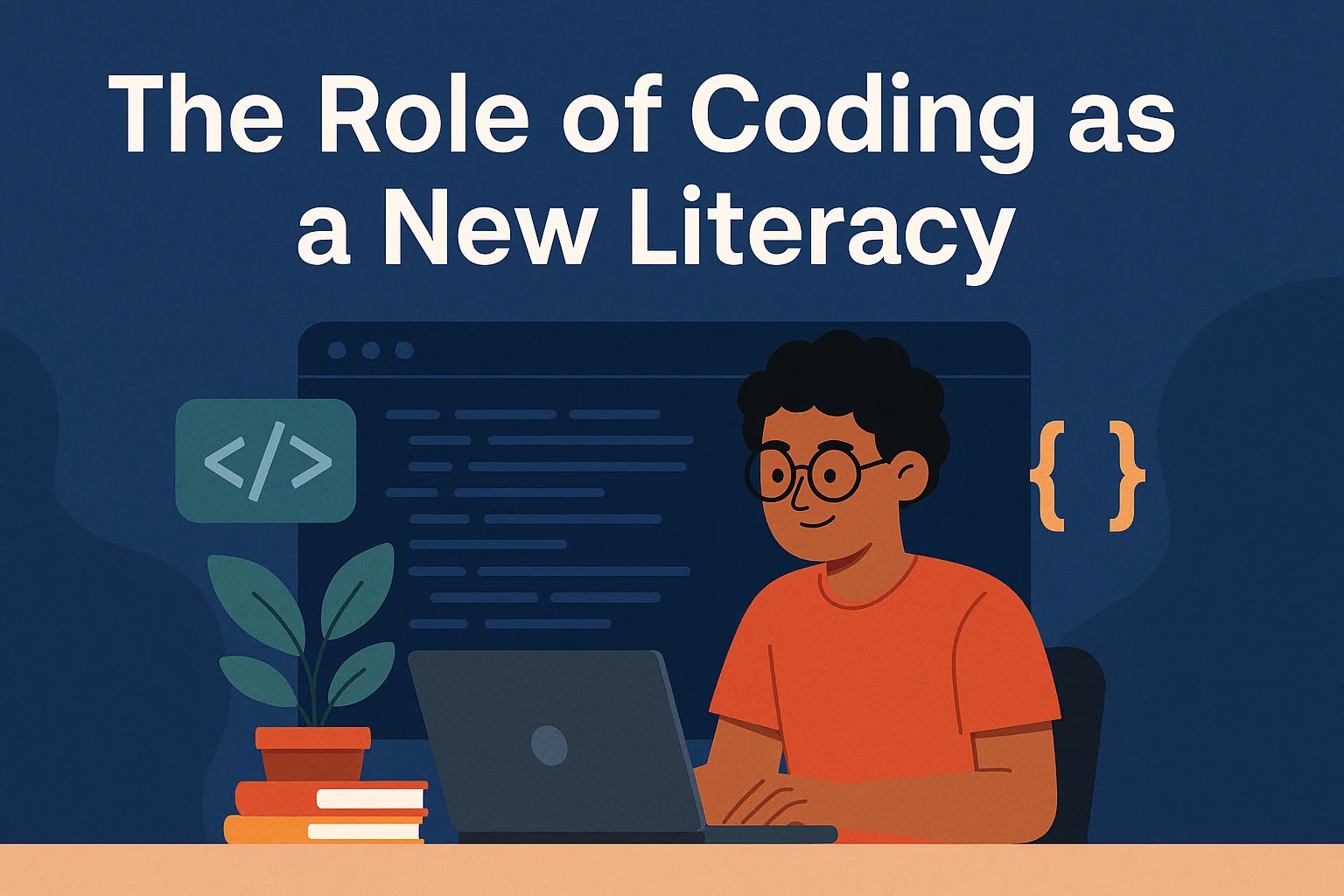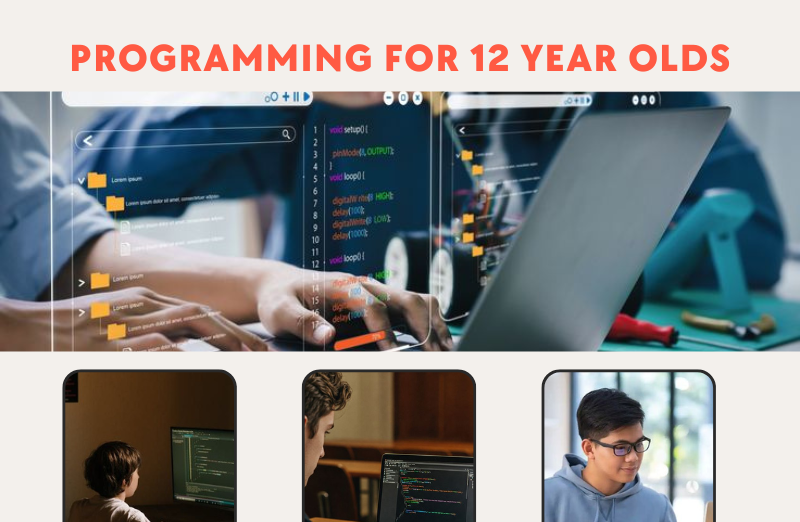Table of Contents
Introduction: Why game dev courses are the smartest “screen-time upgrade” for 2025 Snapshot: 10 standout programs at a glance How to choose the right course for your teen Key Takeaways FAQ SectionWhy game dev courses are the smartest “screen-time upgrade” for 2025
- Gaming passion → coding super-power – When teens learn to build the titles they love to play, motivation skyrockets and complex STEM concepts suddenly “click.”
- Massive career upside – The global games industry is forecast to hit $300 billion by 2030, and interactive-tech skills translate seamlessly to software, film, AR/VR, and AI design.
- Project-based curricula win – Courses that end with a fully playable game deliver the biggest confidence boost, portfolio pieces, and bragging rights.
- Live feedback accelerates mastery – Mentors who review code in real time help students squash bugs 70% faster than self-paced learning alone (Codingal).
- Plenty of entry points – Whether your teen loves Minecraft mods or wants to tackle C++ in Unreal Engine, there’s a perfect-fit pathway below.
Snapshot: 10 standout programs at a glance
| # | Course | Best for | Languages/Tools | Starting cost |
|---|---|---|---|---|
| 1 | Codingal Game Dev Track | Live 1-on-1 mentoring | Scratch, Python, JavaScript | Free assessment → paid plans |
| 2 | Codecademy Intro to Game Dev | Browser-based tinkering | JavaScript, Phaser.js | Free → Pro $17/mo |
| 3 | Coursera MSU Game Music | Audio-focused creatives | Audio middleware | Free audit / Cert $49 |
| 4 | Khan Academy Games & Visualizations | Totally free beginners | JavaScript, ProcessingJS | Free |
| 5 | Tynker Game Dev Paths | Younger teens, block → text | Block code, Python, JS | $12/mo annual |
| 6 | edX University Catalog | Academic depth | Varies (C#, C++) | Free audit / Cert $49+ |
| 7 | Coursera CalArts Art & Concepts | Storytellers & artists | Paper protos | Free audit / Cert $39 |
| 8 | Udacity Intro to Game Dev | Unreal Engine explorers | C++, Unreal Engine | $399 (often 50% off) |
| 9 | Minecraft Education Edition | Sandbox builders | MakeCode, Python | School license / $12 per seat |
| 10 | GameMaker Education | 2D indie scene | Drag-and-drop, GML | Free tier / Edu bundles |
1. Codingal Game Development Track
- Personalized, project-rich pathway – “Our game development courses are designed to turn your child’s love for gaming into a productive learning experience” (Codingal).
- Step-up curriculum – Teens start in Scratch and “gradually move to advanced text-based languages” such as Python and JavaScript, then tackle Roblox Lua for 3D worlds (Codingal).
- 1-on-1 live mentoring – “Live 1:1 classes ensure personalized attention and faster learning,” making it easy to debug tricky physics or AI scripts in real time (Codingal).
- Global competition edge – Students build portfolio pieces for hackathons like the National Coding Olympiad, showcasing skills to colleges and scholarship boards.
- Proven popularity – Over 100,000 students have already enrolled, giving the track a vibrant peer community for feedback and play-testing (Codingal).

2. Codecademy – Introduction to Game Development
- Code in the browser, no installs – “Start building games from day one with hands-on projects” that run right inside your web tab (Codecademy).
- Modern JS + Phaser power – Learners “use Phaser.js to create browser-based games,” mastering sprites, tile maps, and collision in a friendly syntax (Codecademy).
- Zero prerequisites – “No prior experience required—perfect for beginners,” so even middle-schoolers can jump in (Codecademy).
- Massive learner network – Over 50 million coders have studied on Codecademy, ensuring forums are buzzing when you need tips (Codecademy).
3. Coursera – Game Design & Development: A Bit-by-Bit History of Video Game Music (Michigan State University)
- Unique audio twist – Students “explore the history and impact of video game music,” dissecting classics from Super Mario to Halo (Coursera).
- Hands-on sound design – You’ll “learn how to create and integrate audio assets into your games,” elevating atmosphere and player emotion (Coursera).
- Flexible teen-friendly pacing – With no strict deadlines, busy high-school schedules mesh easily with assignment windows.
- Growing fan base – Over 25,000 students have enrolled, building a supportive peer-review pool for compositions (Coursera).
4. Khan Academy – Programming Games & Visualizations
- Totally free, forever – Perfect for budget-conscious families; the nonprofit’s resources are always open.
- Interactive challenges lock concepts – “Interactive challenges help reinforce your understanding” after each mini-lesson (Khan Academy).
- Beginner-proof immediate feedback – The live code editor “provides immediate feedback on your code,” turning red errors into green successes in seconds (Khan Academy).
- Huge user base – The platform sees 20 million monthly users, so your teen is never coding alone (Khan Academy).
5. Tynker – Game Development Courses
- Block-to-text bridge – “Start with block coding and progress to real-world languages like Python,” easing the shift from drag-and-drop to syntax (Tynker).
- Gamified pathway – Quests, badges, and leaderboards keep motivation soaring as students “compete in coding challenges and showcase skills” to peers (Tynker).
- Massive kid coder community – Over 60 million kids worldwide have learned with Tynker, ensuring ample inspiration from shared projects (Tynker).
- Parents’ dashboard – Track lesson time, concepts covered, and final projects in a glance—handy for homeschool portfolios.
6. edX – University Game-Dev Catalog
- Ivy-league caliber – “Learn game development from top universities and industry leaders,” including MIT, Harvard, and experts (edX).
- Pick-your-focus menu – Courses “cover design, programming, and interactive storytelling,” so artists and coders alike find a home (edX).
- Flexible audit model – Teens can sample lectures free, then pay only if they want the résumé-boosting certificate.
- Deep bench strength – With 100+ game dev courses in the catalog, learners can stack micro-credentials through high school and beyond (edX).
7. Coursera – Game Design: Art and Concepts Specialization (CalArts)
- Storytelling meets systems design – Teens “explore the art and concepts behind successful games,” from character arcs to level flow (Coursera/CalArts).
- Pro feedback on prototypes – “Hands-on projects help you apply design principles,” and peer reviews refine ideas fast (Coursera/CalArts).
- Creative-first approach – No coding experience? No worries—“No prior experience required” in the specialization (Coursera/CalArts).
- Broad enrollment – 70,000+ learners have taken the series, ensuring robust discussion forums for critique (Coursera/CalArts).
8. Udacity – Intro to Game Development
- Industry toolchain – “Learn game development with C++ and Unreal Engine,” the same combo used in Fortnite and AAA studios (Udacity).
- Portfolio-ready projects – Students “build your own games from scratch,” exporting executables that run on Windows or Mac (Udacity).
- Mentor code reviews – Receive inline comments from pros, ensuring habits like memory management and frame-rate optimization form early.
- Proven outcomes – 30,000 graduates have completed the course, many citing it as the gateway to college game-dev degrees (Udacity).
9. Minecraft Education Edition – Game-Based Learning
- Beloved sandbox, educational twist – “Minecraft Education Edition brings game-based learning to the classroom,” merging creativity with coding (Microsoft).
- Code within the blocks – Teens “learn coding with MakeCode and Python inside Minecraft,” seeing scripts come alive instantly (Microsoft).
- Global events = global friends – Students “participate in global challenges and events,” collaborating cross-continent on massive builds (Microsoft).
- Widespread adoption – 35 million students and educators use the platform, so server worlds are always buzzing (Microsoft).
10. GameMaker Education
- 2D focus, infinite creativity – “Create 2D games using drag-and-drop or GML scripting,” ideal for pixel-art passion projects (GameMaker).
- Beginner to pro runway – Start with visual logic, then graduate to GML for performance-boosting custom scripts.
- Share & monetize – GameMaker lets teens “publish your games to multiple platforms,” including Steam and mobile stores (GameMaker).
- Massive dev base – 10 million developers have tapped GameMaker, so tutorials, asset packs, and Discord help are only a click away (GameMaker).
How to choose the right course for your teen?
- Match learning style – Visual learners may thrive in drag-and-drop Tynker, while self-starters gravitate toward edX or Khan Academy.
- Check hardware – Unreal projects need a beefy GPU; browser courses run on a Chromebook. Avoid tech-frustration upfront.
- Plan progression – Aim for a block-code intro, a syntax-based intermediate course, and finally a 3D engine or advanced design specialization.
- Look for community – Forums, Discords, and hackathons offer feedback loops and lifelong friends.
- Balance budget vs. mentoring – Free audits are fantastic, but nothing beats live instructor eyes when that nested loop refuses to behave.
Key takeaways
- Passion-powered learning is sticky—game dev turns hours of play into career-ready coding chops.
- Diverse pathways mean every teen, from musical storytellers to competitive speed-coders, finds an engaging track.
- Live or community feedback dramatically cuts the “frustration curve,” keeping motivation high.
- Portfolio projects created in these courses double as standout college-application material and early freelancing assets.
- Start small, scale up – A single Scratch arcade clone today can snowball into a MMO capstone by senior year.
Ready to build your child’s first Roblox masterpiece? Explore Codingal’s live Roblox & Lua courses today and watch creativity level up in real time. 🚀
FAQ Section
What are the benefits of game development courses for teens?
Game development courses boost motivation by combining teens’ passion for gaming with coding skills. They offer project-based learning, live feedback, and a range of entry points to suit various interests.
What career opportunities does game development offer?
The gaming industry is expected to reach $300 billion by 2030, with skills translating well into software, film, AR/VR, and AI design.
How do live feedback and mentoring enhance learning in game development?
Live feedback and 1-on-1 mentoring allow students to identify and fix coding issues 70% faster than self-paced learning, leading to more efficient skill development.
What makes project-based curricula effective for learning game development?
Project-based curricula encourage practical application of skills, resulting in fully playable games that boost confidence, enhance portfolios, and increase learning satisfaction.
Are there beginner-friendly game development courses available?
Yes, platforms like Khan Academy and Tynker offer beginner-friendly courses with block coding and interactive challenges, making it easy for new learners to start.
Citations
- https://www.codingal.com/courses/game-development/
- https://www.codecademy.com/learn/introduction-to-game-development
- https://www.coursera.org/learn/game-design
- https://www.khanacademy.org/computing/computer-programming/programming-games-visualizations
- https://www.tynker.com/courses/game-development
- https://www.edx.org/learn/game-development
- https://www.coursera.org/specializations/game-design
- https://www.udacity.com/course/intro-to-game-development–ud283
- https://www.microsoft.com/en-us/education/products/minecraft-education
- https://www.gamemaker.io/en/education














